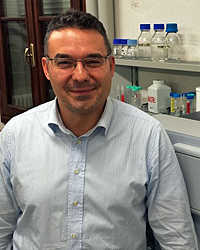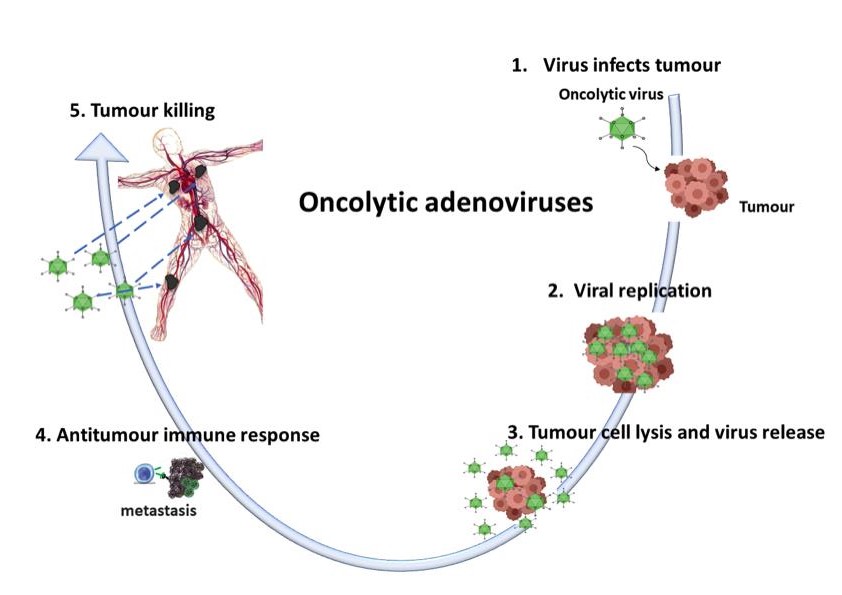Drug Delivery and Biopharmaceutics
 |
| ||||
 | Protein Modification (PEGylation) Protein modification with soluble polymers, namely PEGylation, is a well established approach to enhance the biopharmaceutical porperties of protein drugs |
read more
Physical PEGylation. A novel class of polymers has been generated to yield physical protein modification. As an example, physical protein PEGylation has been successfully achieved by using PEG and polysaccharides bearing hydrophobic domains. Physicochemical, biopharmaceutical, stability, pharmacokinetic and pharmacodynamics studies have been performed with model proteins, namely G-CSF and GH, by using a variety of techniques: gel chromatography, dialysis, circular dichroism, ITC, in vivo models. This technology has been demonstrated to provide a suitable protein formulation, which is an alternative to the covalent conjugation of polymers. As an advantage, this technology does not yield a new chemical entity and the protein is released in the active form from the supramolecular assembly. Paolo Caliceti, Stefano Salmaso
Site selective polymer conjugation can be achieved by using tailor made linker. Accordingly, new novel chemical protocols based on “both attached” to or “growing from” strategies have been set-up to conjugate PEG or other polymers to selected amino acids, namely cysteine, which are buried in the protein structure or to the N-terminal amino group. Protein-polymer bioconjugates have been fully characterised to evaluate the chemical composition, structure and physicochemical properties. Paolo Caliceti, Gianfranco Pasut
Enzymatic conjugation via transglutaminase. Beside chemical approaches of site-selective conjugation recently the interest in this field has been directed towards the investigation and development of enzymatic method of polymer conjugation. The advantage resides in the great specificity and selectivity of the enzymes and in the possibility to conjugate polymer to specific amino acids that cannot be linked with chemical approaches. Transglutaminase is able to link an amino donor, usually an amino polymer, to the acyl group of specific glutamines yielding very homogeneous conjugates in high yield. Gianfranco Pasut
Antibody drug Conjugates (ADC) are studied as potent and selective therapy agents against cancer. Present ADC suffers the common issue of lack of site selective conjugation of the anticancer drug to the MAb yielding a series of different isomers. Site selective covalent conjugation and new ADC reversible complex are studied to overcome such issue. Gianfranco Pasut, Stefano Salmaso
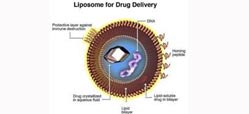 | Lipid and Polymeric Micro- and Nanoparticles Micro- and nanoparticles can be obtained through innovative processes wih a variety of materials, namely lipids and polymers, including proteins, in order to yield products with peculiar physicochemical and biopharmaceutical properites |
read more
Polymeric and lipid micro- and nanoparticles are prepared by supercritical fluid and spray-drying based techniques by using a variety of lipids , namely tristearin, tripalmitin, phospholipids etc., and polymers, polyesters (PLA, PLGA and polymer mixtures). Methods have been developed to produce protein loaded particles, which have been found to preserve the protein integrity and release the protein according to tuneable kinetics. Paolo Caliceti
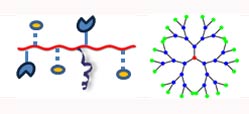 | Polymer Bioconjugates (Polymer Theraputics) Polymer-drug bioconjugates can be designed to enhance the biopharmaceutical properties of drugs and to yield passive or active targeting. These systems find an interesting application in tumour targeting |
read more
Polymer conjugates for active tumour targeting have been obtained by using pullulan as multivalent platform which was harnessed with targeting agents, for example alendronate, for bone targeting, or folic acid, peptides and antibodies for cancer cell targeting. Anticancer drugs are attached to the backbone through chemically or enzymatically cleavable linkers, typically hydrazine bonds or peptide linkers. The conjugates are fully characterized for stability, composition, solubility, size and drug release by means of spectrometric (fluorescence, UV, NMR etc.) and chromatographic analysis, elemental analysis, DLS. In vitro studies are usually performed by using selected cell lines to identify the toxicity and selectivity. In vivo studies are performed to evaluate the PK profiles. Paolo Caliceti, Gianfranco Pasut
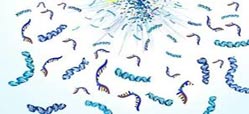 | Oligonucleotide Delivery Oligonucleotides represent one of the most innovative class of therapeutics. Nevertheless, due to their fragility and poor biopharmaceutical properties, their delivery is extremely challenging |
read more
An innovative formulation for oligonucleotide delivery has been developed by using novel polycationic moieties that have been conjugated to solublepolymersderivaized with targeting agents. The physicalbioconjugates are characterized by spectrometric and chromatographicanalysis, gel electrophoresis, ITC, DSC, TEM, DLS. In vitro studies are performed by using selected cell lines to examine the citotoxicityaswellascell the internalization by confocal microscopy and flow-citometry. In silico studies are also performed to evaluate the structure of the complex. Paolo Caliceti
Cationic block-copolymers. Using Reverse-Addition Fragmentation chain Transfer (RAFT) polymerization techniques different libraries of novel cationic di-block and tri-block polymers have been generated for the complexation and delivery of nucleotides. By tuning the monomers ratios and the polymers molecular weight it is possible to govern the polyplexes stability and their targeting and delivery efficacy to the expected intracellular site of action. These materials are currently under investigation for oligonucleotides or pDNA delivery. Francesca Mastrotto
read more
However, this strategy has also disadvantages like low efficacy, production of anti-viral neutralizating antibodies and lack of antiviral drugs in case of uncontrolled replication. To overcome these limitations, we are using oncolytic viruses combined with therapeutic agents for a targeted delivery to tumor sides, enhanced replication, more potent lysis promoting a systemic antitumor immunity. Mariangela Garofalo
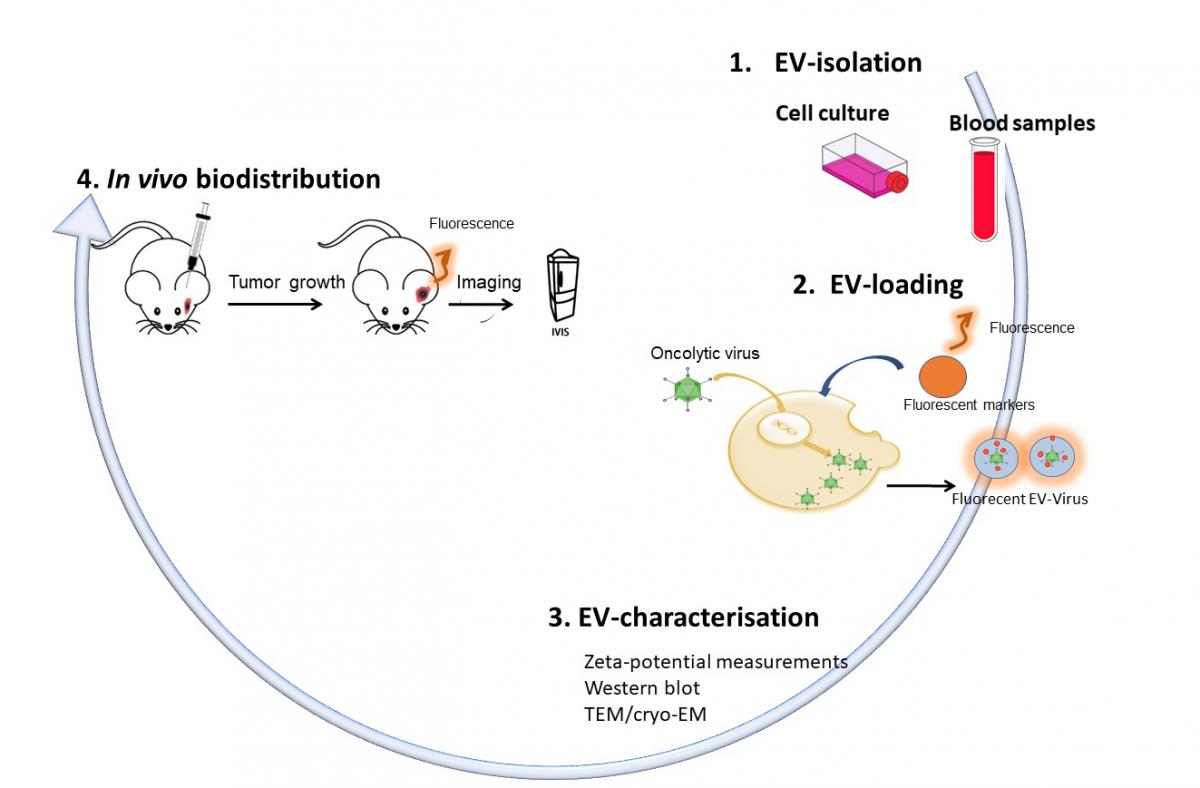 | Extracellular vesicles Extracellular vesicles (EVs), are nano- to micron-sized lipid membrane vesicles secreted into the extracellular environment transporting proteins, lipids and nucleic acids from cell to cell. For these reasons, EVs have recently acquired much interest as possible drug delivery carriers in cancer treatment as they can carry a wide variety of molecules such as DNA, RNA, proteins and small molecules improving the pharmacokinetic profile of the encapsulated therapeutic agent by protecting the drug from degradation. |
read more
In particular we are combining the administration of oncolytic viruses with therapeutic and diagnostic agents inside EVs in order to enhance the systemic delivery of anticancer agents resulting in an improved tumor- selective delivery. Mariangela Garofalo
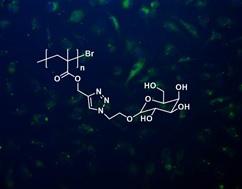 | Synthetic Polysaccharides Living radical polymerization techniques can be exploited to designed synthetic polysaccharides from sugar-based monomers to mimic and improve the structure and function of biological polymers. In particular, depending on specific features, such as sugar nature and polymer composition, it is possible to target selectively certain lectin receptors expressed on Antigen Presenting Cells, with the final goal to modulate the immune system in view of different therapeutic purposes. Importantly, these materials can be explored to direct active molecules to the selected cells but can also exert an intrinsic biological activity. |
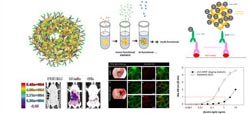 | The Avidin Nucleic Acids NanoASemblies (ANANAS) Platform The ANANAS are soft biocompatible and biodegradable poly-avidin nanoparticles (NP) obtained through a Nature-guided process of assembly, which guarantees stoichiometric composition and performance reproducibility. |
read more
ANANAS are biocompatible polymers of avidin with superior performance, applicable in both drug delivery and immunodiagnostics. The NPs are multifunctionalizable in one pot reactions, they have colloidal stability in physiological buffer which permits several applications in nanomedicine. Margherita Morpurgo
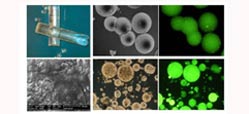 | Sol-Gel Silica Sol-gel silica is an inorganic polymer with high potentials in biomedicine. It is easy to produce from low cost precursors and it is highly versatile so that materials useful for multiple applications can be envisaged |
read more
Depending on the polymer porosity, internal organization and composition, sol-gel silica based materials capable of improving the dissolution of poorly soluble drugs or matrices for the sustained release of highly soluble and unstable drugs of different nature (low MW, proteins or nucleic acids) can be generated. Margherita Morpurgo
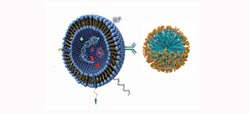 | Smart Liposomes and Micelles Liposomes, polymersomes and micelles are versatile systemsthat can be assembled with stimuli responsive and functionalcomponents, and targeting agents to yield «smart» drug delivery systems. |
read more
With the commercialization of a variety of liposomal drug formulation, lipidic vesicles have been recognized as first class biocompatible and safe nanovehicles. We aim here at generating novel multifunctional vesicular (liposomes and polymersomes ) and micellar systems that possess suitable “stealth” properties to minimize complement activation and favour blood circulation time, and that can perform sequential activities including tumour entrapment, cancer cell uptake, drug payload release once stimulated by the peculiar intratumor micro-environment.
Vesicular nanosystems and micelles assembled with synthetic responsive materials, targeting agents and cell penetration enhancers are developed for delivery and controlled release of anticancer drugs, proteins with therapeutic or immune-stimulating properties, siRNA, plasmids. Special efforts are dedicated to generate systems with controlled interfacial properties that derive from a harmonic cross-talk of the surface associated components.
The systems we are developing are obtained according to a careful design of the components structure and physico-chemical properties to allow for efficient self-association in micelles or polymersomes or anchoring within the liposomes bilayer. Stefano Salmaso, Gianfranco Pasut.
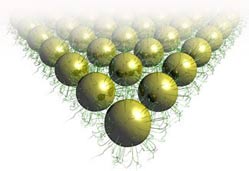 | Gold Nanoparticles |
read more
Gold nanoparticles as a platform to explore strategies to dynamically modulate the surface properties of particles in response to environmental changes. This is aimed at enhancing the site-selectivity of nanocarriers.
Furthermore, coating features of gold nanoparticles is under investigation to control, not only the biorecognition of cell membrane associated receptors, but also the intracellular pathway and organelle deposition of the colloidal gold after cell uptake.
Recently, gold nanoparticles have also been regarded as sensitizer for laser thermal ablation and X-Ray cancer therapy. However, tissues are not permeable to Visible light, and X-Ray irradiation can unspecifically damage healthy tissues. To overcome these limitations, we are investigating gold nanoparticles to be exploited with alternative, less damaging physical treatments of cancer. Stefano Salmaso







